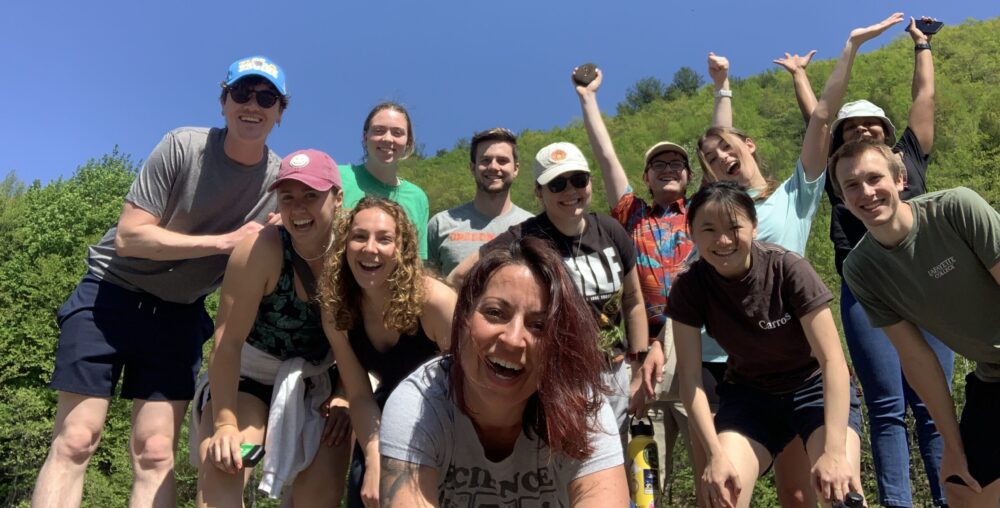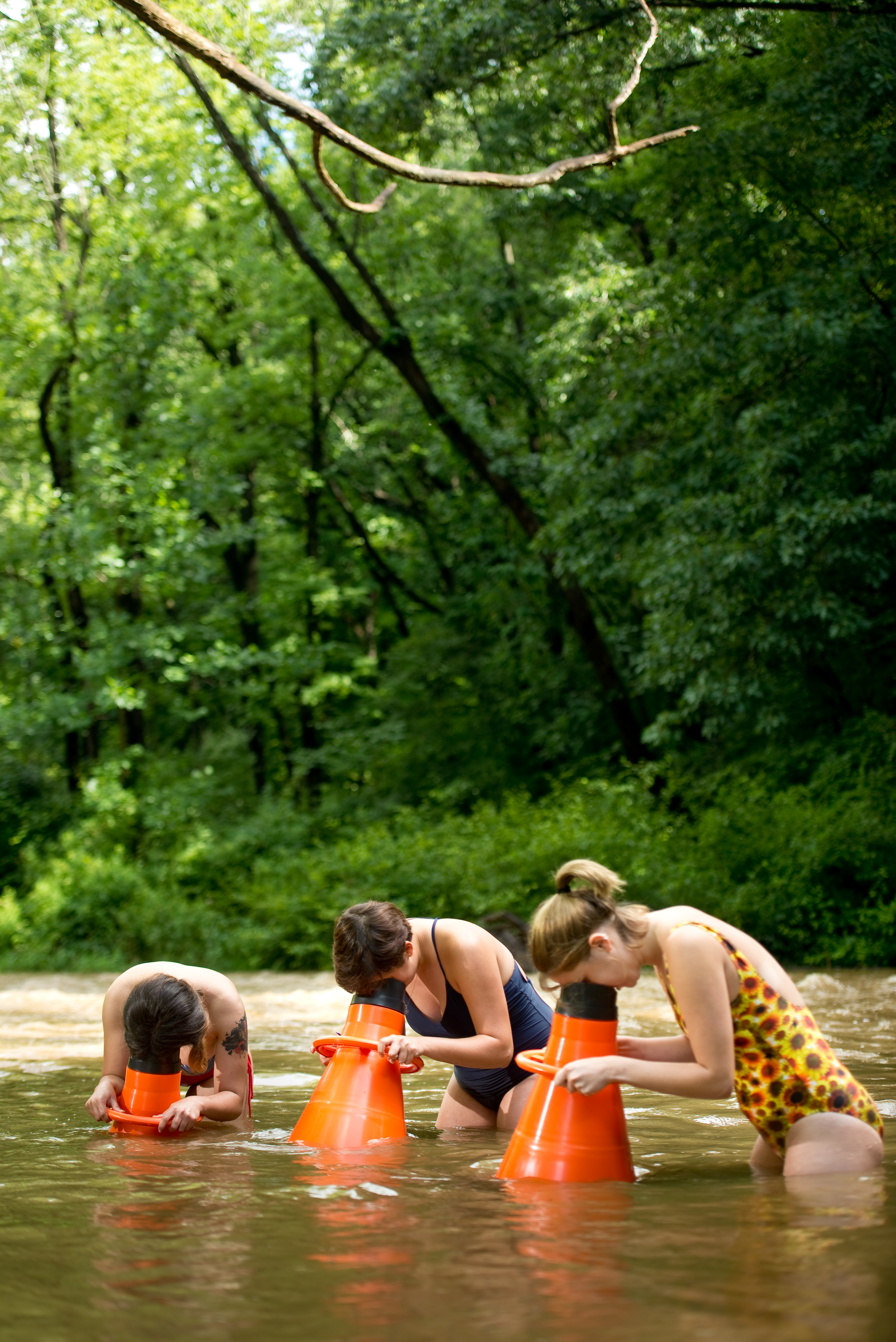Over the past 10 weeks, my Excel and Nalven scholars have been busy working on some exciting field projects in conservation biology and restoration ecology.
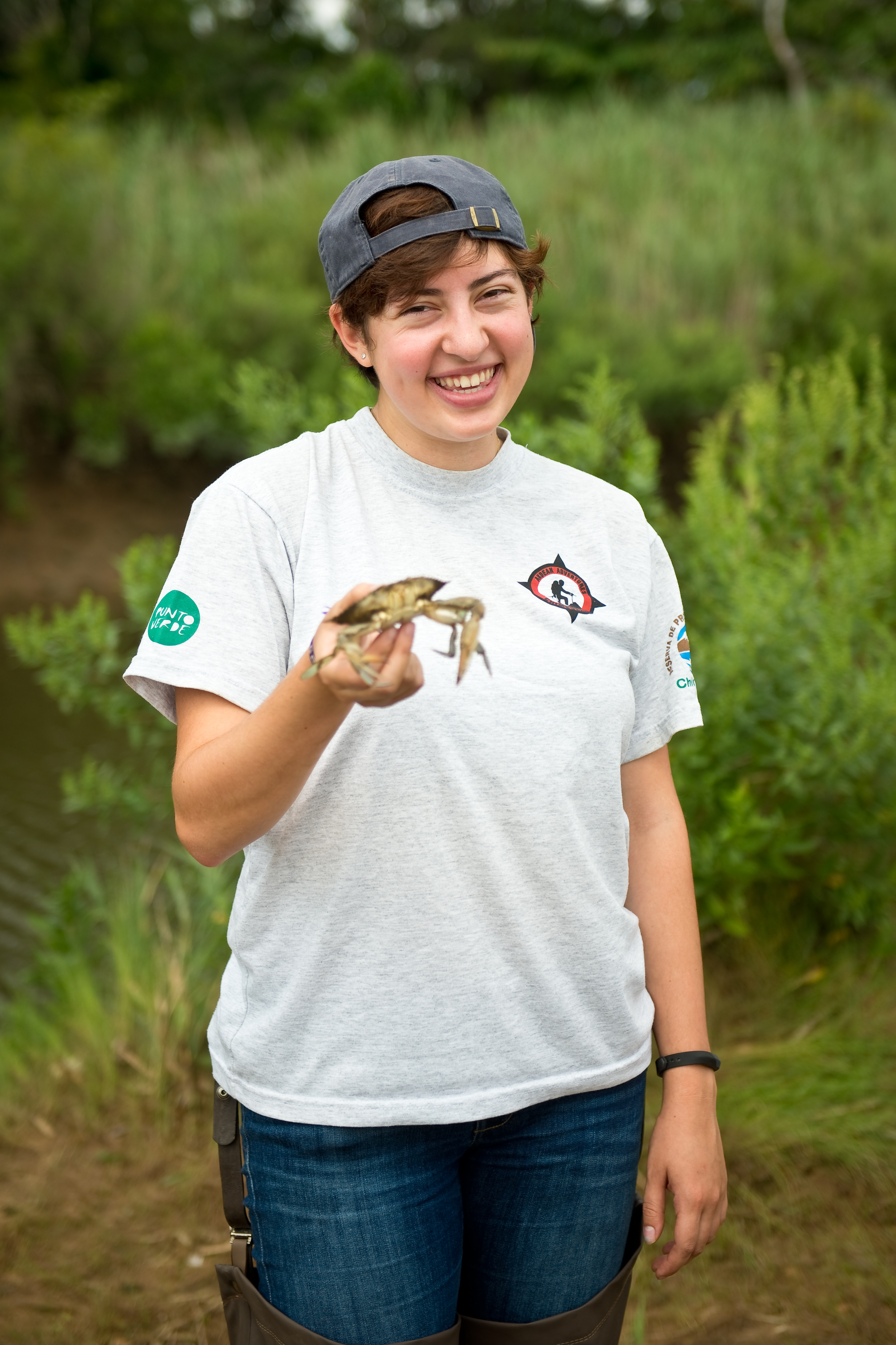
Juliana Ventresca ’18 is studying two invasive crabs in the Hudson-Raritan Bay for her honors thesis in Biology. The Chinese mitten crab (Eriocheir sinensis) and Asian shore crab (Hemigrapsus sanguineus) have been introduced to a number of estuarine and river systems outside of their natural range where they have destroyed biodiversity and economic infrastructures. As a result, their introduction to New York and New Jersey is a concern.
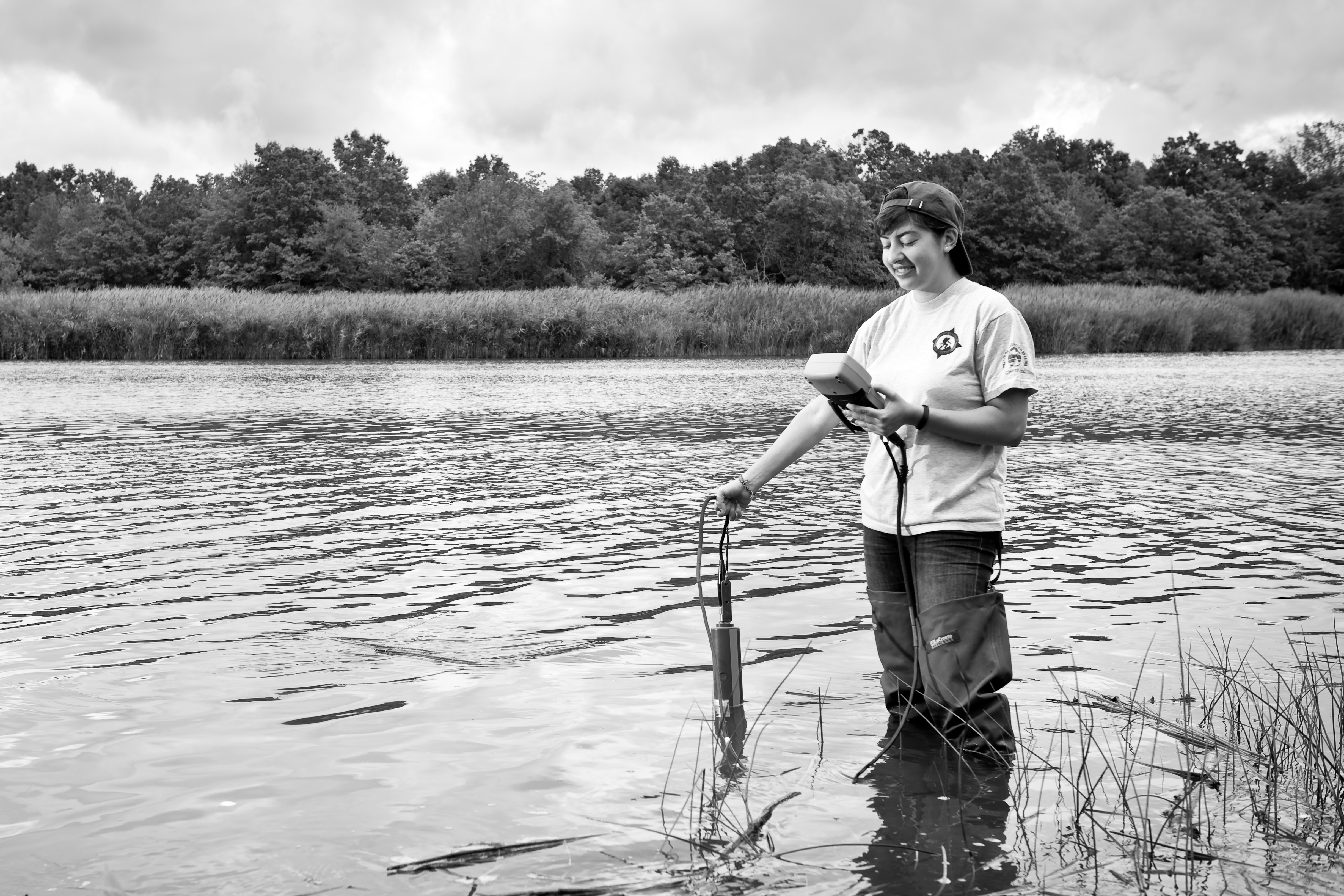
Juliana’s research addresses a number of factors interfering with the development of a more successful management plan for these two invasive species through improved monitoring efforts, development of a centralized database, and community outreach to raise awareness.
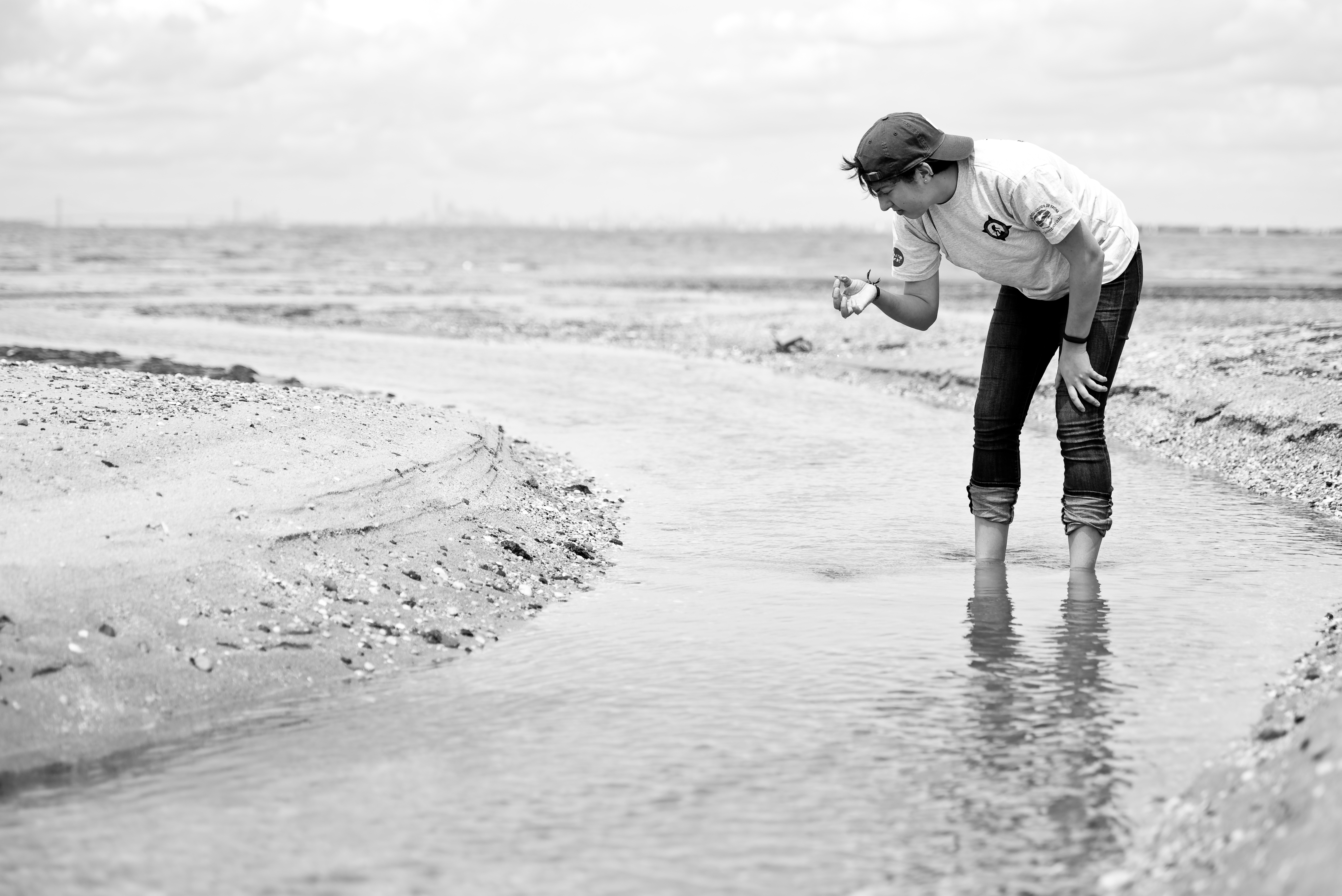
Information that we have received through interviews with anglers in the Hudson-Raritan area indicates that both the Chinese Mitten crab and Asian shore crab are seasonally abundant in tidal streams like this one – Many Mind Creek.

For her Honors Thesis research, Esra Demirhan ’18 (left of image) is investigating freshwater mussel abundance, diversity, and distribution prior to dam removals in Bushkill Creek. There is some concern that existing populations of mussels, some of which are federally threatened with extinction, will be harmed by sediments released through dam removal. In order to find the mussels and conserve them, we must carefully survey bottom sediments…USING SNORKELS!
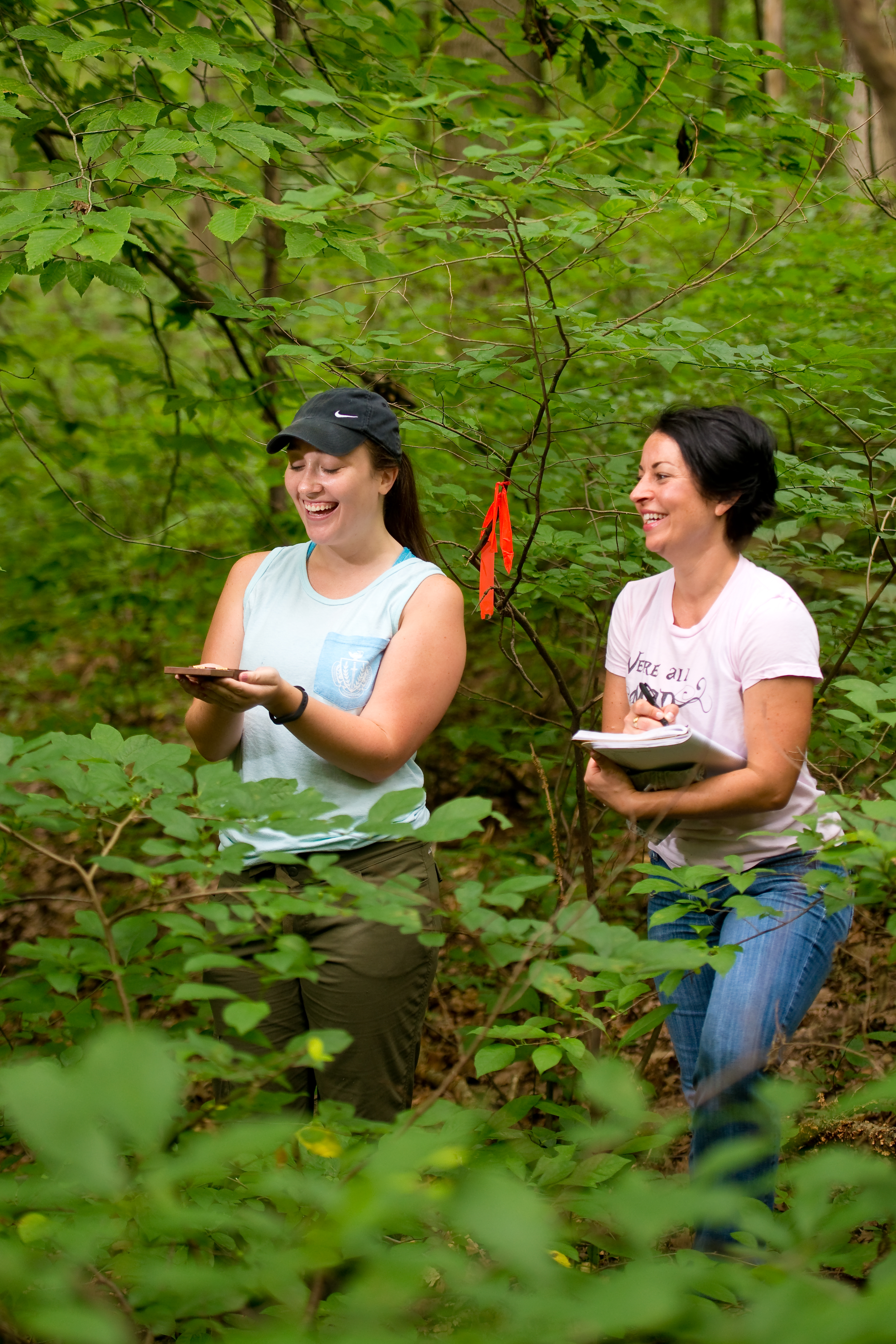
Another one of my students, Emily Lynch ’18 (left of image), is studying the impact of habitat fragmentation on terrestrial salamanders in Jacobsburg State Park. In this image, Emily is measuring canopy cover using a densiometer since we know from previous studies that salamanders tend to prefer forests with closed canopies and moist leaf litter.
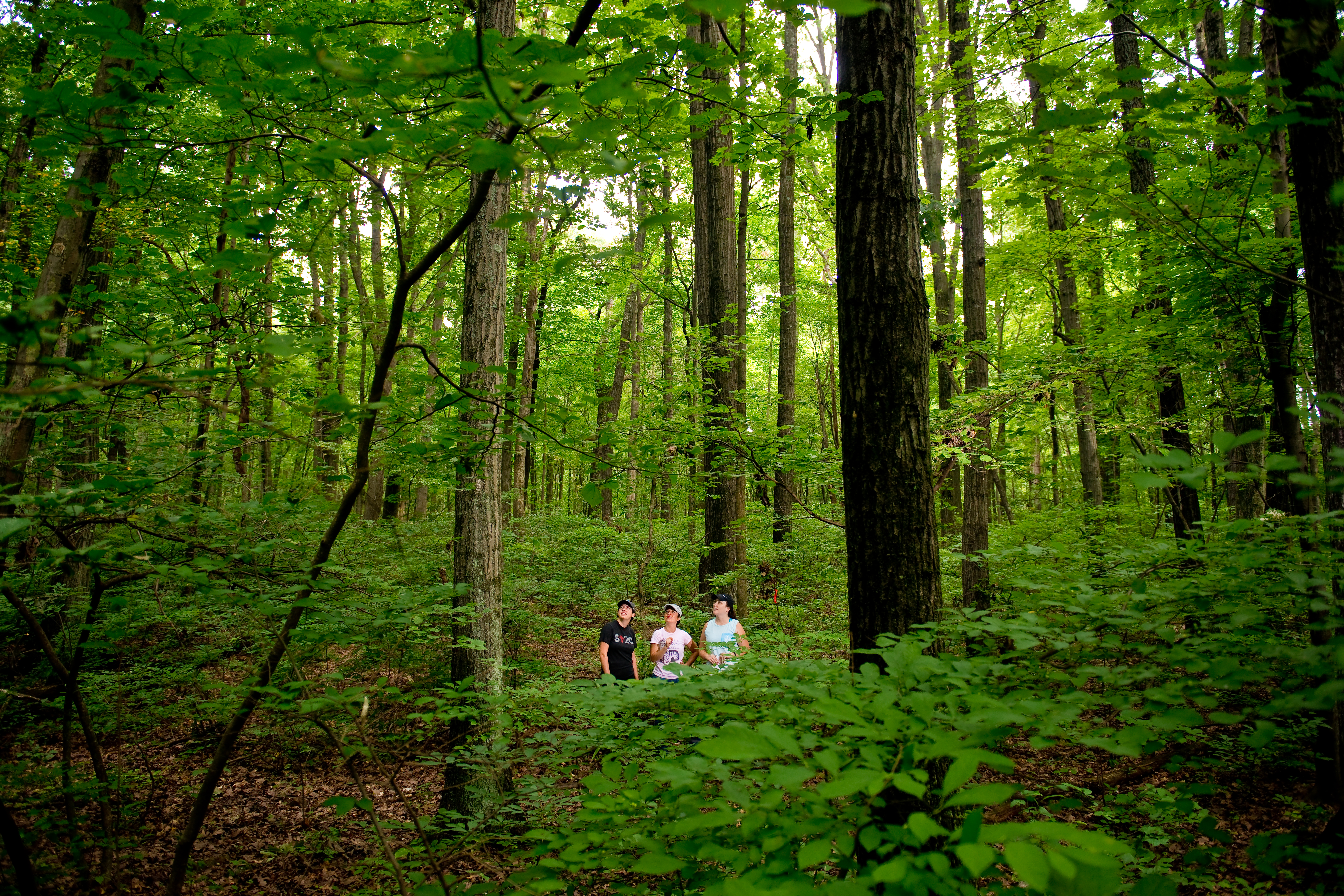
We expect the site in this image, which is in a isolated area of the park more than 1,000 meters from the nearest road, to have a greater abundance of terrestrial salamanders.
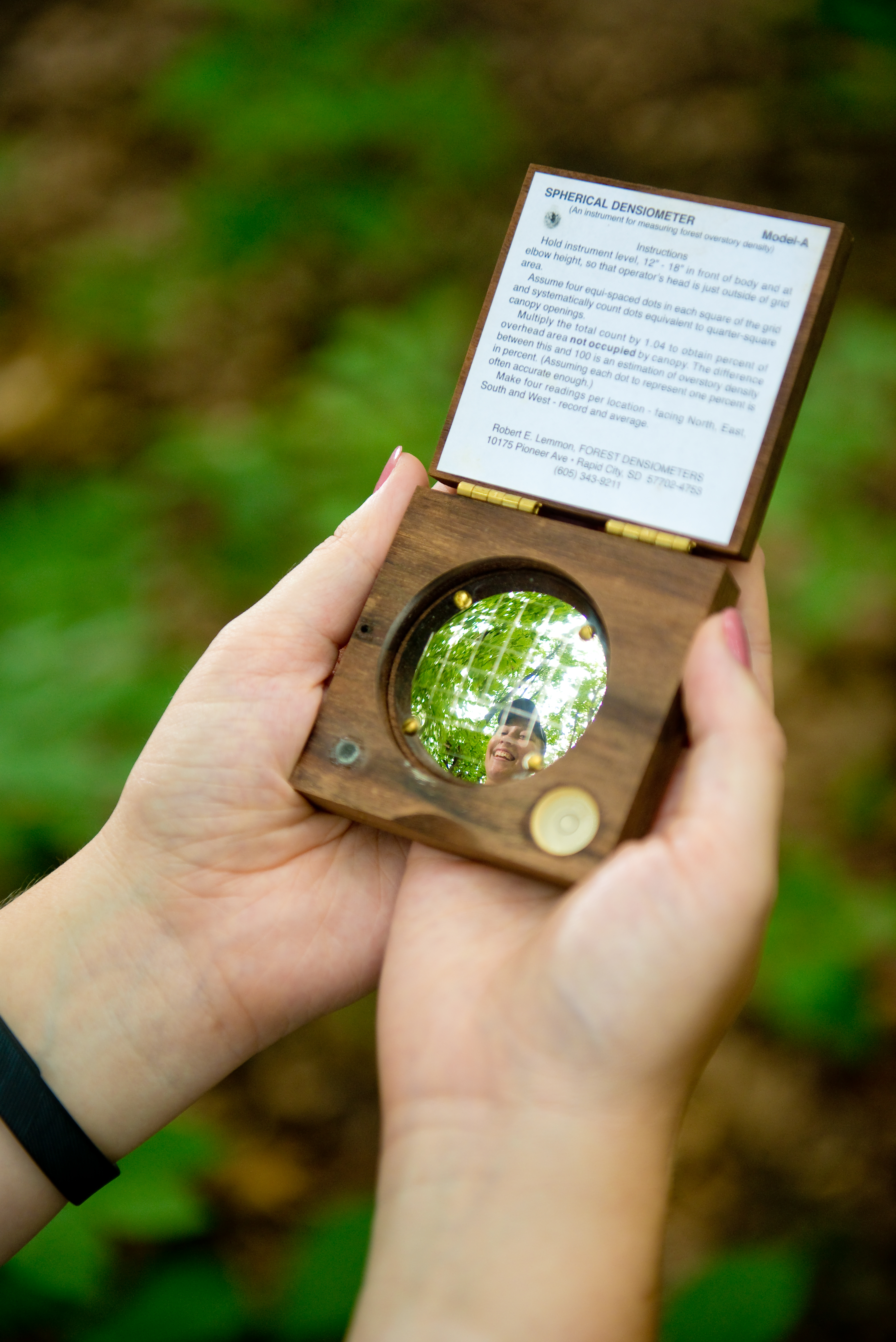
A close-up view of the densiometer, which is a mirror reflector engraved with a cross-shaped grid of 24 quarter-inch squares to delineate a plot overhead. You use the grid to estimate the proportion of the sky overhead that is under cover of the tree canopy.
PHOTO CREDIT (all photos): Bill Stank, PhotoSynthesis Photography. http://www.photosynthphoto.com/
